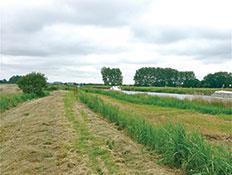As the autumn chill sweeps through the streets of London, so signs of a cooling in the house market begin to appear. But what is the longer-term forecast?
In prime central London, prices have surged well past the highs of the recent past. How many of us, though, were really ever in a position to afford a penthouse in Mayfair or a mansion in Chelsea? That market has beendriven by wealthy (and often international) buyers offering high deposits or even buying outright. Although the strong demand for such properties may well ease in the future, especially if the pound strengthens, a collapse in prices does not seem likely.
The money has also spilled over into other parts of London, rippling through to strong price growth in owner-occupied hot spots such as the boroughs of Islington and Wandsworth. Looking at the broader picture, though, average house prices across England and Wales are still around 2% below their 2007 peak in nominal terms and 20% lower in real terms (when adjusted for inflation). At the same time, the UK economy has recovered to pre-crisis levels and unemployment is at its lowest in six years. So, while houses are clearly not cheap, prices are not as inflated as they may seem at first glance and the market’s rise is supported by economic fundamentals.
Crucially, even though interest rates are low and the cost of debt is cheap, debt availability is limited compared to levels pre-financial crisis. People aren’t borrowing as much as they were on a loan-to-value basis. The heat in the market is being absorbed by those with equity rather than just by debt. This deleveraging of the market creates a much stronger foundation for longer term growth.
That is good news for those who already own property or who are in a position to buy now. For an increasing number of young professionals and families, though, it is likely to mean renting and doing so for longer than previously. The supply of suitable accommodation — particularly in London and the South East — is presently very limited. This needs to change.
Some of the larger housebuilders, developers and landowners are starting to see the private rented sector (PRS) as a potential outlet for their new projects and as a credible alternative to the traditional build-for-sale route.
While there are some expectations that aren’t being matched on the pricing on such projects, it does mean that we are likely to see more deals happening between institutions, investors and developers in the coming months and years.
Two of Britain’s favourite conversation topics — the weather and house prices — are both notoriously difficult to forecast. The best we can do is look at the facts from the past and the present for clues on what is likely in the future.
Historically, house price downturns have been triggered by economic recession and high unemployment. Now the economy is growing and unemployment is falling. Another key trigger has tended to be sharply rising interest rates. Now they are very low and, although they are expected to rise, the Bank of England has been at pains to point out that the increases will be small and gradual.
No one wants to repeat the experience of Michael Fish famously telling viewers not to worry hours before the deadly storm of 1987. So I won’t make any radical forecasts for the short term. But I will say the long-term outlook for UK residential property remains relatively sunny on a total return basis, with particularly attractive prospects for the rental market in London and the South East. I just wish I could be as upbeat about the autumn weather…
Alex Greaves is residential fund manager at M&G Real Estate.






























No comments yet